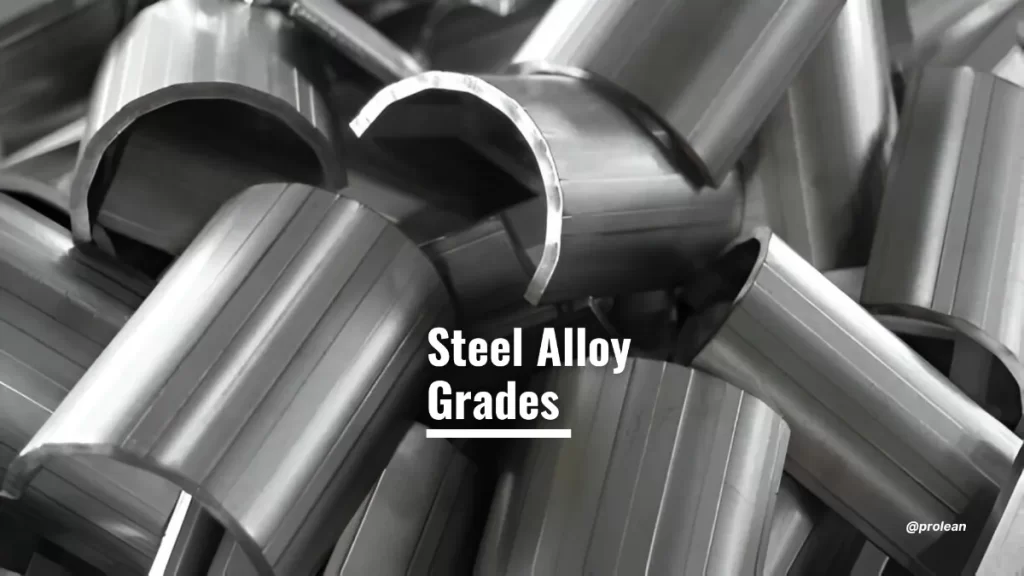
Steel Alloy Grades
Steel is one of the most relied-on materials worldwide. You can use it daily in buildings, tools, or vehicles. While most people assume it’s just iron and carbon, modern steel is far more complex than that. Today’s steel includes precise combinations of other elements to improve strength, flexibility, and durability.
You might think steel is a fixed formula. In reality, it changes based on how it’s made. Adjusting the carbon content or adding alloys like chromium or manganese shifts how it behaves. These changes can make steel harder, more ductile, or corrosion-resistant. For example, when choosing between 4130 and 4140 steel, it helps to know how each type handles strength and toughness differently. The same goes for stainless steel 316 and 316L. They seem to be very similar but have slight differences. That’s why steel works in many environments, from construction to aerospace.
There’s a common belief that steel comes in only one or two forms. But in truth, there are more than 3,500 different grades of steel. Each grade serves a unique industrial purpose. You can identify a steel grade by looking at its carbon percentage, the types of alloying elements added, and how it’s processed.
This article will give you a full breakdown of how steel alloy grades are classified. You’ll explore the four main types of steel, the role of steel grades, and how heat treatment improves performance.
4 Common Types of Steel Alloy Grades You Should Know
Four common types of steel exist in general. Each type is built with its characteristics. All industries use carbon, alloy, stainless, and tool steels. How are each one different from the others? We will go over this in detail.
Steel can be used in heavy construction and surgical tools, and it adjusts quickly. All the versions are made to handle particular business needs. Knowing this allows you to pick the correct grade for any task.
Carbon Steels
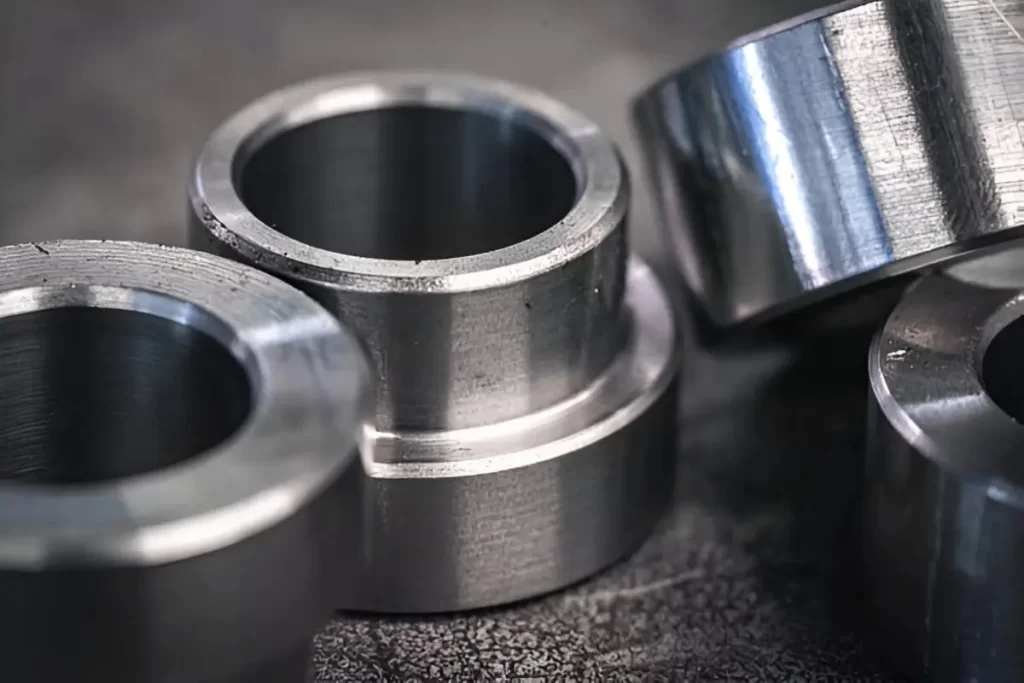
Carbon Steel Machined Components
Carbon steel primarily consists of iron and carbon (up to 2.1%), with limited quantities of manganese, silicon, and other residual elements. Approximately 90% of steel produced today belongs to this category. That’s the case since it is hard to make, accessible to many people, and not too expensive. Buildings, oil and gas pipelines, and car frames are familiar places where you will see it.
Three categories are set by how much carbon is involved. Mild steel, which is sometimes called low-carbon steel, has up to 0.3% carbon. Because it is ductile, it works well when welding and bending. You will use it to make structures, sheets, or furniture frames.
Medium carbon steel includes between 0.3% and 0.6% of carbon. You get both strength and flexibility with it. So, it is common in engines or other types of machinery. High-carbon steel is very tough because its carbon content is higher than 0.6%. It is, however, not as flexible as a stiletto blade and springs.
Moreover, it is easy to produce and does not cost a lot. So, big construction projects use it as a main kind of material. There is a significant and deliberate difference between mild steel and high-carbon steel. (Get more details on Alloy Steel VS Carbon Steel)
Alloy Steels
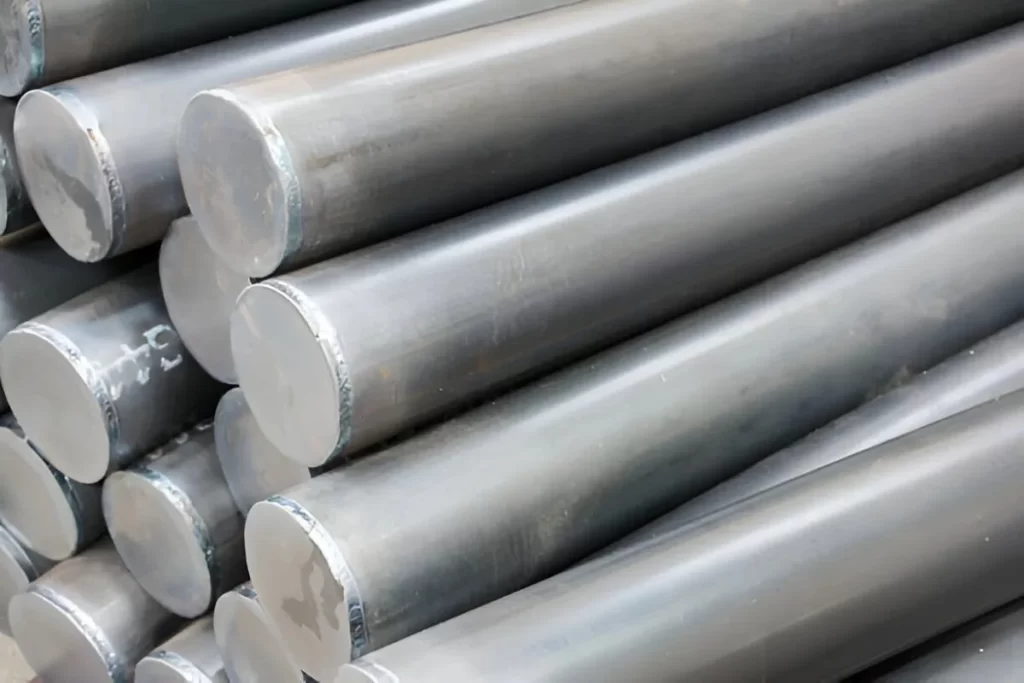
Alloy Steel Rods
Alloy steels contain carbon steel and additional elements like chromium, nickel, copper, or aluminum, which are usually added. Those ingredients alter the behavior of steel when it is stretched and worn out. Alloying adds protective qualities, flexibility, and strength.
Alloy steel is best for performing parts. Manufacturers use it in the aerospace industry, on offshore oil sites, and with anything that requires frequent replacement. It is available in many grades, depending on the job.
They are made to do jobs that are too difficult for carbon steel. That covers cases involving hot, cold, challenging force situations, and a lot of other uses. Alloy steel stands out because of its durability.
Stainless Steels
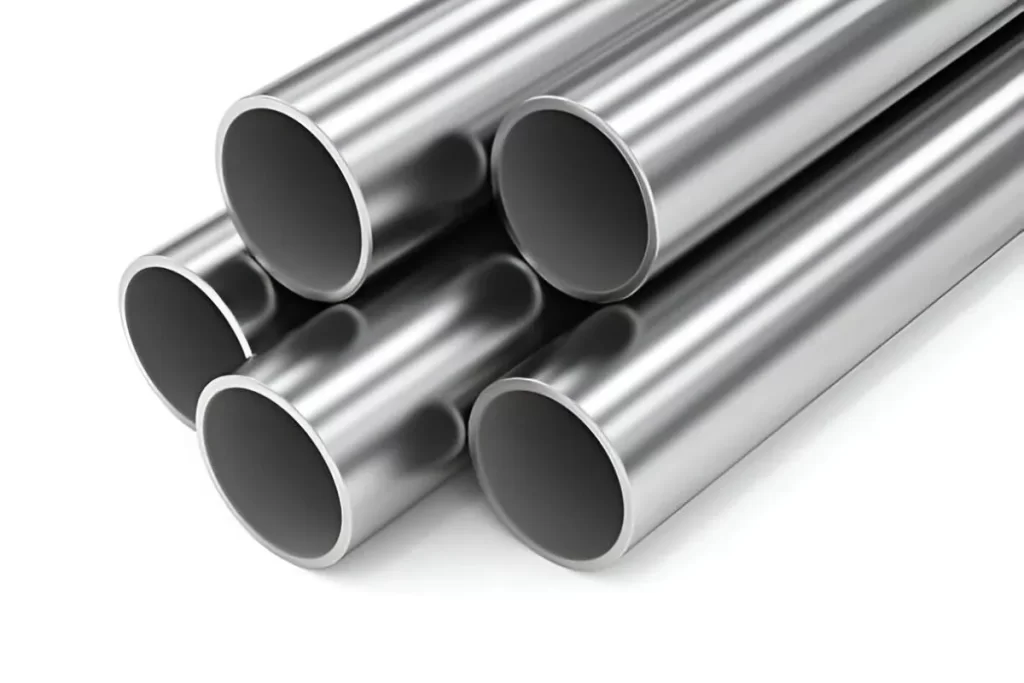
Stainless Steel Pipes
Steel must be capable of withstanding the harsh weather. Here, stainless steel can be counted on. It has 10–20% chromium within its composition. Nickel and silicon are substances that make titanium corrosion-resistant.
It stands out among steels because it resists corrosion very well. So, it performs well outdoors. It is usually seen on bridges, rails, and rooftops. Salty air or rain does not corrode stainless steel.
304 stainless steel is widely used in many industries. It covers wiring and components from severe conditions. This also leads to it being present in many electrical devices.
The main reason for this steel isn’t always its ability to fight the weather. Surgical tools and hospital equipment will be made of stainless steel. You can easily clean it; it is not a place where bacteria can grow. That is why many food, pharma, and medical companies turn to chemistry.
Tool Steels
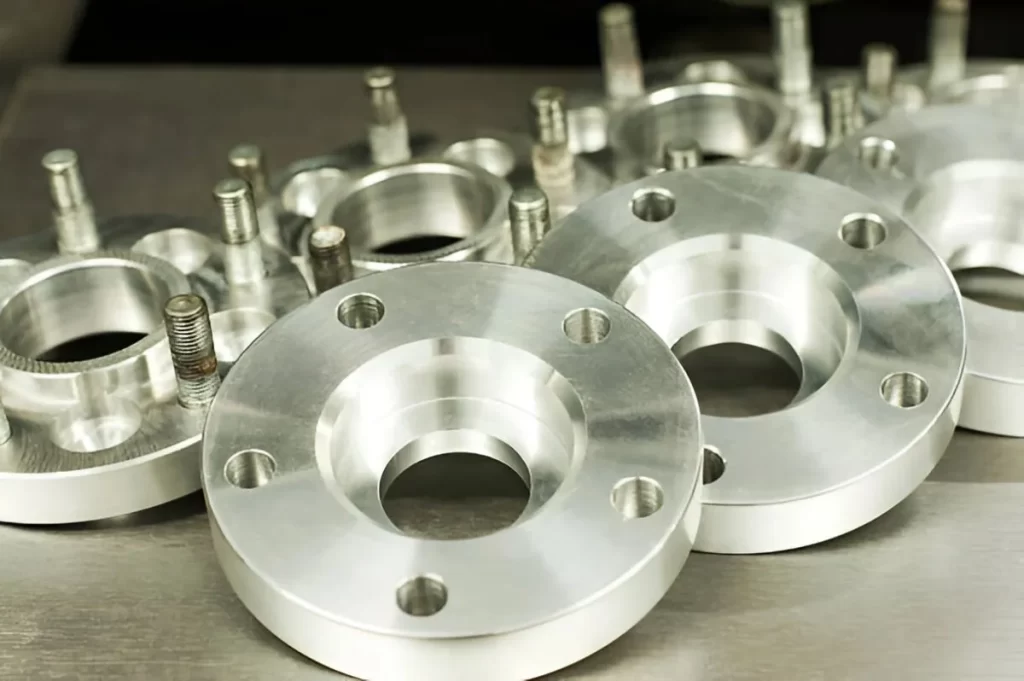
Tool Steel Machined Parts
Tool steel is used for demanding jobs like making cutting tools, punches, and dies. Its shine appears in tools like saws, grinders, and presses. Tool steels can deform at elevated temperatures; hot-work grades (e.g., H13) resist deformation up to ~540°C (1000°F), not indefinitely. That is due to adding metal elements such as tungsten, cobalt, and molybdenum.
Tool steel can withstand wear that quickly breaks down other metals. It is strong and durable and holds a sharp edge for an extended period. Cutting tools like hand tools, dies, and drill bits depend on it. Daily precision work in factories is made possible with its help.
Regular pressure or stress doesn’t easily break tool steel. It doesn’t form dimples, crack, or change shape. That’s the reason it is used confidently throughout heavy industry and manufacturing.
See Also: Alloy Steel VS Stainless Steel
Steel Grading System
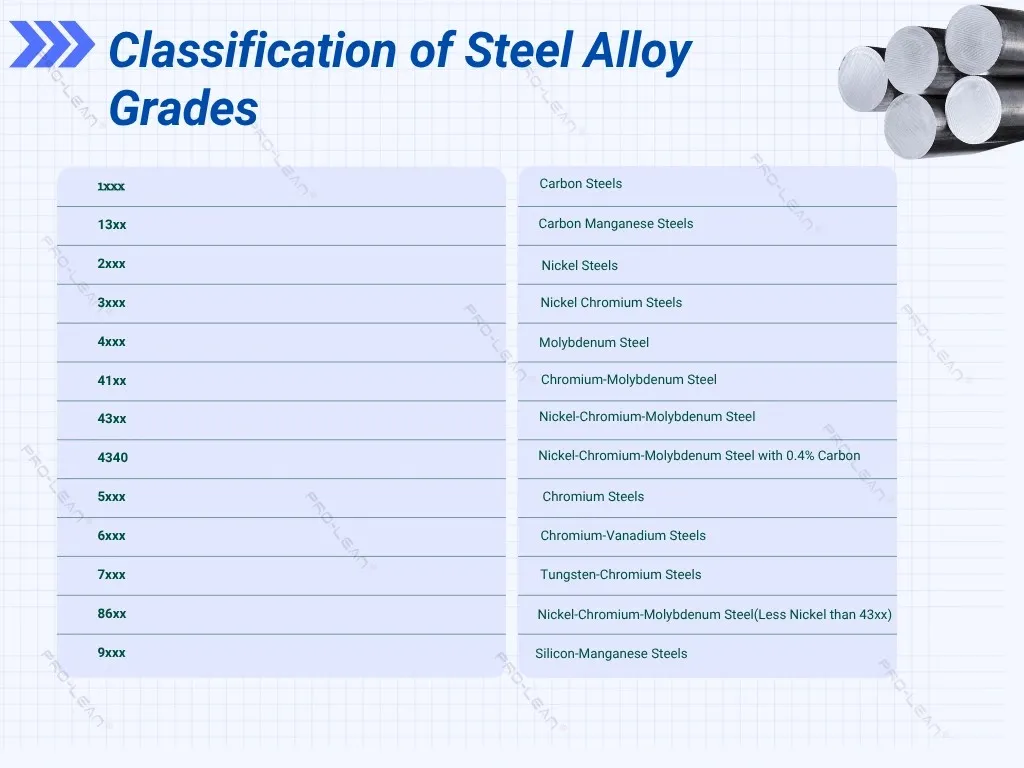
Steel Alloy Grades categorization
Grading systems for steel allow you to sort steel by type. People group steel by the way it is utilized. Cooling steel in a certain way can change its strength. Therefore, two steel sheets can have the same alloy and still get different grades due to heat treatment.
In the ASTM system, grades are identified using a combination of letters and numbers. ASTM’s ‘A’ prefix denotes ferrous materials, while ‘SA’ indicates stainless/alloy steels for aerospace applications. Every metal has a number to show its properties. Because of this, it becomes easier to pick the right steel for different purposes.
A four-digit code is used instead in the SAE system. The first two numbers mean the type of alloy used. The last two digits indicate carbon content in hundredths of a percent (e.g., 4140 = 0.40% C). It immediately shows you the working capacity of the steel.
People use these grading systems in many industries. Those who work in science, engineering, and manufacturing use them daily. With standards, the content of the material is kept uniform and unambiguous. They also show how steel needs to be fabricated or applied.
Various Methods of Steel Heat Treatment
Heat is used to alter the properties of steel. Various methods try to develop hardness, ductility, and toughness in metals. The following are the most critical heat treatments.
Spheroidizing
Heating carbon steel to 1290°F (699°C) for 30 hours is done during spheroidizing. Cementite, which was once in layers, now forms as tiny spheres. The steel gets softest and most capable of being shaped. Many times, this method has been applied to improve machining and forming. Mild steel is enhanced most by the spheroidizing process.
Full Annealing

Full Annealing
Annealing carbon steel means heating it very close to its critical temperature point. After having it for an hour, you gently cool it down. Because the steel cools slowly, a coarse pearlitic structure forms. You end up with flexible steel that is not affected by internal stress.
Process Annealing
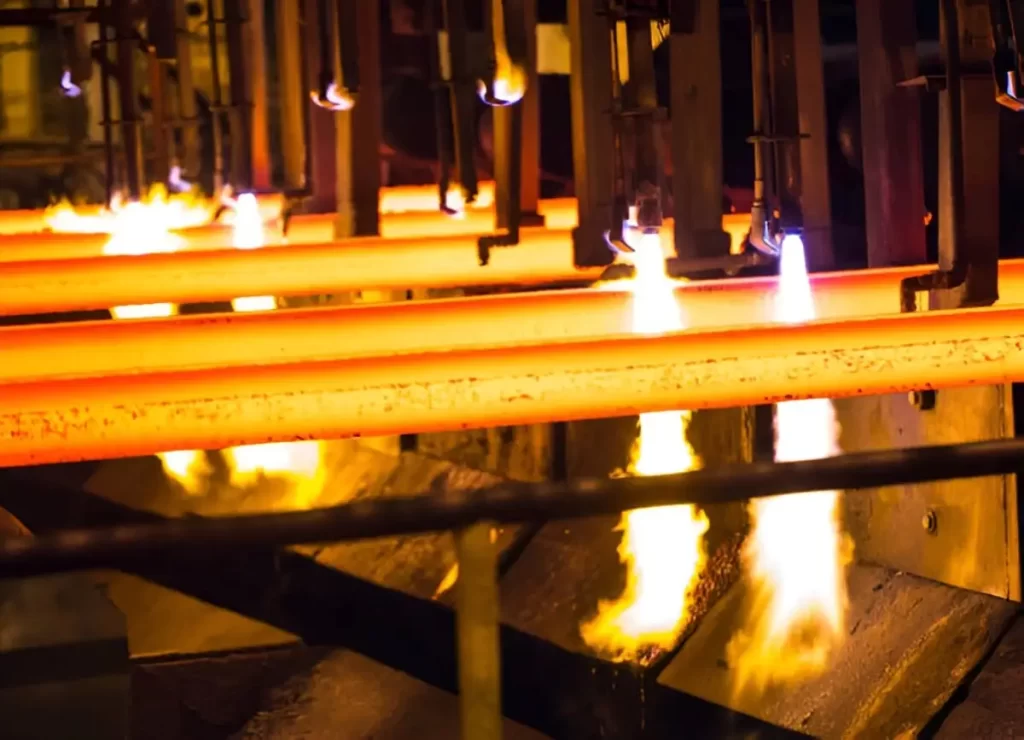
Steel Annealing
Process annealing takes out the stress caused by cold working in low-carbon steel. The process takes one hour as the metal is heated between 550-650°C (1022-1202°F), below the lower critical temperature. It rearranges the structure of the steel. Cooling the steel allows it to be machined and formed more easily.
Isothermal Annealing
Carbon steel has a high carbon content. It is usually annealed isothermally. Heat the substance above the temperature at which it can be heated. Hold the temperature, allow it to cool to the lower critical point, and hold it there. Once baking is complete, let it cool down gradually to room temperature. It keeps the temperature and structure the same throughout the cake.
Normalizing
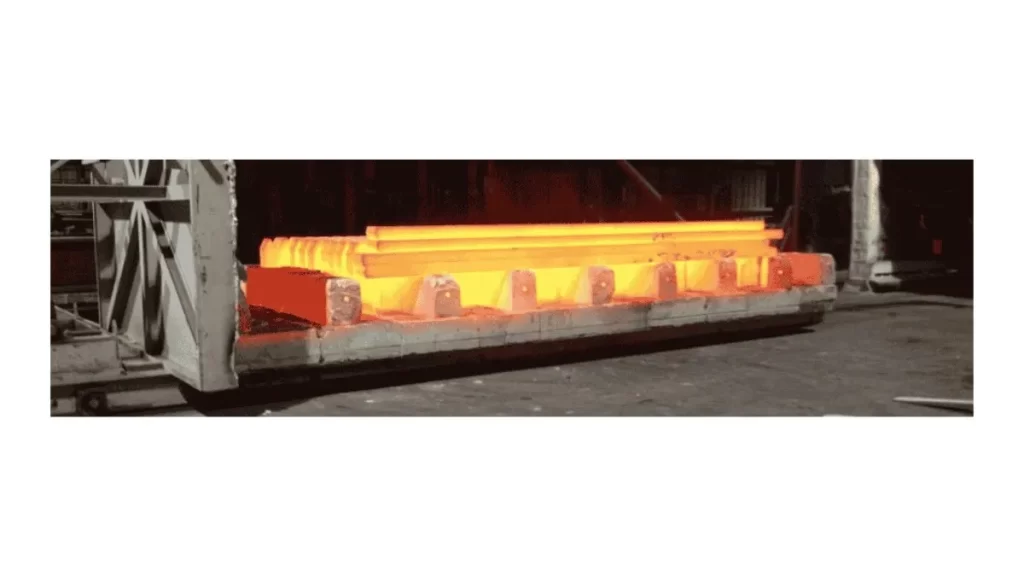
Allowing carbon steel to be normalized at the austenite phase for one hour. Cooling the process is done in air. It gives the steel a fine structure showing pearl-like grains. The steel is strong all around, so it can handle stress well.
Quenching
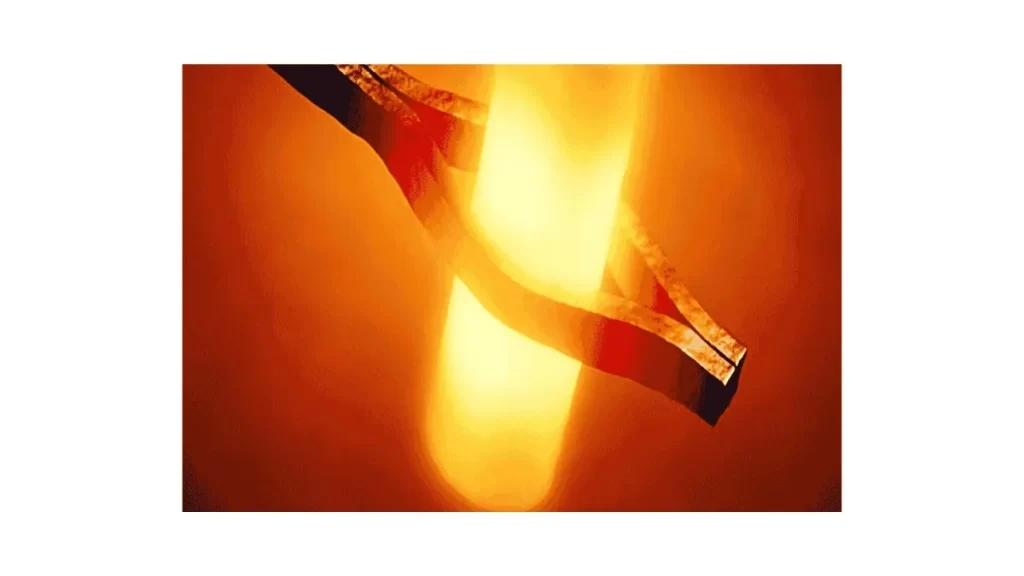
Steel Quenching
Rapidly cooling steel in quenching happens after it is heated to the normalizing temperature. You can cool it down using water, oil, or brine. It produces a rigid and easy-to-break martensitic structure. Many cutting tools and parts that need to last for a long time are made with it. Most of the time, quenched steel is then tempered.
Tempering Quenched Steel
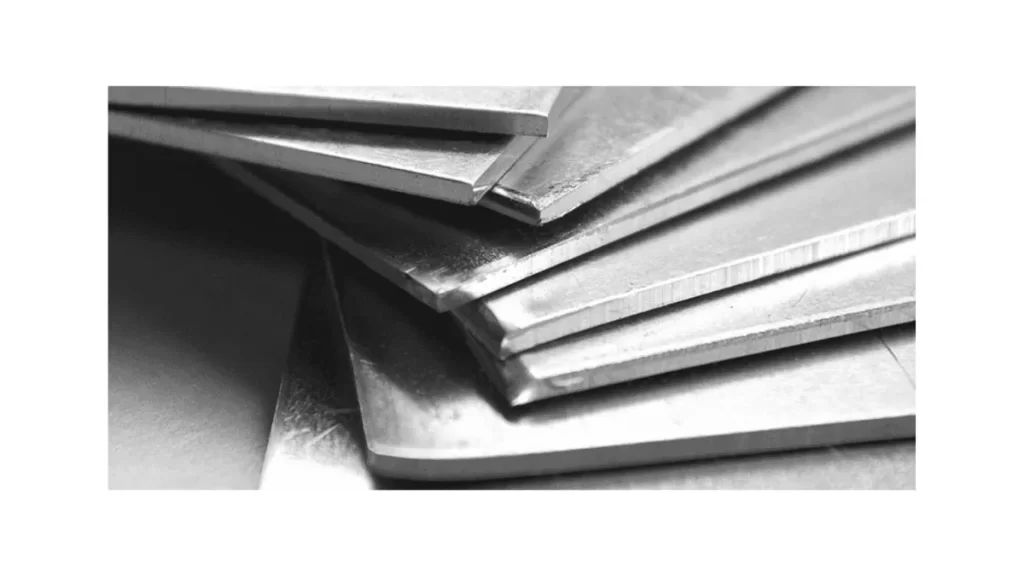
Quenched and Tempered Steel
Tempering gives quenched steel the proper hardness and toughness. You reheat it at a lower critical temperature. Tempering temperatures range from 150-650°C (300-1200°F), with lower temperatures preserving hardness and higher temperatures increasing toughness. It makes it less likely to break and stronger.
Which Steel Grade Is Best?
No one specific grade of steel is always considered the ‘best’ steel machining grade. Many different factors influence the right choice. For example, elements like your steel’s role, its required mechanical and physical properties, and your investment.
Some types of steel are generally regarded as the best in their fields. Carbon steels often use the grades A36, A529, A572, 1020, 1045, and 4130. The usual top-quality alloy steels are 4140, 4150, 4340, 9310, and 52100. Among stainless steels, important grades often mentioned are 304, 316, 410, and 420. The best grades of tool steels are most often D2, H13, and M2.
Final Thoughts
To choose the best steel alloy grade for your project, connect with a Prolean Tech. We are a metal machining specialist. Whether you need mild steel or specialized alloy parts, we’ve got you covered. At Prolean Tech, we do not merely make sourcing steel hassle-free and simple, but also provide reliable steel machining service. Get in touch with us and get an opinion for your project.
FAQ’s
Q1. What are the grades of alloy steel?
Alloy steel comes in grades 4140, 4340, 8620, 1215, and 6150. These grades differ based on their composition and mechanical properties, and are designed for specific industrial applications.
Q2. What are the four types of alloy steel?
The primary alloy steel categories are: Low-alloy (≤8% alloying elements), High-alloy (>8% alloying elements), Microalloyed (Nb/V/Ti additions), and Ultra-high-strength steels.
Q3. What is the strongest alloy steel?
Maraging steel is considered one of the strongest alloy steels, known for its extremely high strength and toughness. Other strong types include 300M and 4340 steel, often used in aerospace and defense.
Q4. What is 4140 steel commonly used for?
4140 steel is widely used in automotive and industrial parts such as gears, shafts, and tools. It provides a good balance of strength, toughness, and machinability after heat treatment.
Q5. Which is stronger, 12.9 or 10.9 steel?
Grade 12.9 steel is stronger than 10.9. It has a higher tensile strength (up to 1,220 MPa), making it better suited for high-stress applications like heavy equipment and structural fasteners.



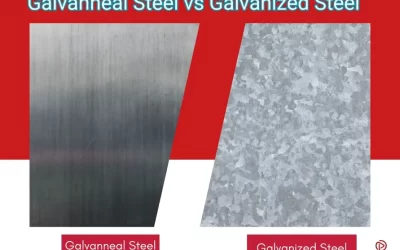
0 Comments